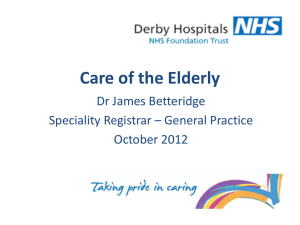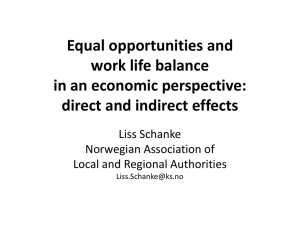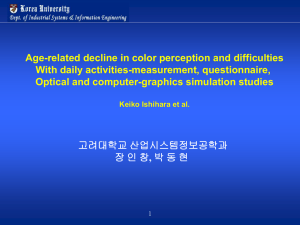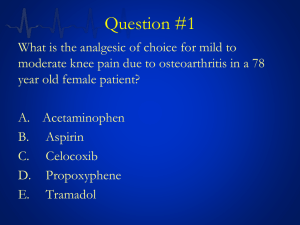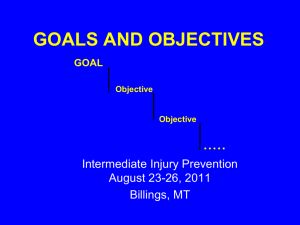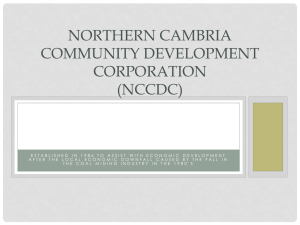PHYSICAL CHANGES WITH OLD AGE & THEIR IMPACT
advertisement
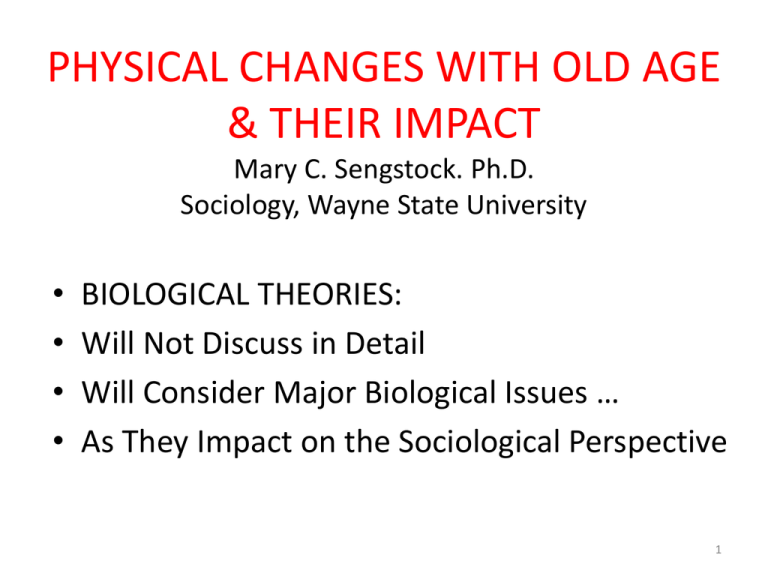
PHYSICAL CHANGES WITH OLD AGE & THEIR IMPACT Mary C. Sengstock. Ph.D. Sociology, Wayne State University • • • • BIOLOGICAL THEORIES: Will Not Discuss in Detail Will Consider Major Biological Issues … As They Impact on the Sociological Perspective 1 VARIATION IN FUNCTIONAL LEVELS • Variability Between Individuals of Same Age • Variability Between Different Functions of Same Individual – Heart Rate vs. Brain Function – Breathing Rate vs. Renal Flow … Etc. • Greater Variability Among the Aged Than Among Younger Persons? – Experts Disagree About This Issue FUNCTIONAL AGE • Defining a Person’s Age in Terms of Their Ability to Function • Great Variability Among Individuals • “She Doesn’t Look That Old!” • “Oh! Only 65? I Thought He Was Older!” • EX: 2 Patients Sharing Hospital Room: – 65 Yr Old – 95 Yr Old SENSORY DECLINE • All Senses Decline in Acuity AS We Age – Sight – Hearing – Touch – Taste – Smell • All Result in Changes in Ability to Perceive & React to Environment • Sight: Stronger Glasses, Bifocals, Cataracts • Smell & Taste: Affects Appetite; Eating Habits • Touch: Peripheral Neuropathy – Difficult to Feel Pain, Recognize Problems – Diabetic Foot Problems MOST SERIOUS DECLINE? • Which Would You Think Would be the Most Serious Type of Sensory Decline? Sight Touch Hearing Smell Taste MOST SERIOUS DECLINE: HEARING • • • • • • Severe Impact on Social Interaction Hard to Hear What Others Say Make Odd or Inappropriate Responses Makes It Difficult to Interact With Others Lose Ability to Participate in Social Relations Lose Contact; Decrease Social Stimulation EX 1: ELDERLY WOMAN & FAMILY • • • • • There’s Mike Shay. “What Did Mike Say?” There’s John Hagan. “Door’s Shaking? Fix it!” Write the Senate. “Call Sheriff? What For?” Where My Pants? “Pen? We’re Going Out!” Phone: We’ll Be Late. “They’re Not Home. Call Back Later.” • “I’m Not Hard of Hearing! You Don’t Talk Loud Enough! Even My Friends Don’t Talk Loud Enough Anymore!” EX 2: PRES. REAGAN & AIDES • Conversation: John Poindexter & Oliver North • Told Reagan of Plans to Sell Arms to Iran & Use the Funds to Support Diversionary Actions in Nicaragua • Reagan Didn’t Understand – Like Most Hard of Hearing People, Was Embarrassed to Admit It • So He Nodded Absent-Mindedly • They Took This As a Sign of Consent PHYSICAL HEALTH IN OLD AGE • • • • Health Status Declines As We Age What Are Some of These Changes? Definition of “HEALTH” Is a Critical Issue 4 Definitions: – WHO (World Health Organization) – Functional Definition – Alternate Functional Definition – Coping Definition “HEALTH” DEFINED BY “WHO” (World Health Organization) • “Complete Physical, Mental, Social Well-Being, Not Just the Absence of Disease or Infirmity” • Is This Realistic? • May Cause “Medicalization” of the Social … • I.e., Use of Medication or Therapy for … – Disruptive Behavior – Opposition to Social Structure HEALTH: FUNCTIONAL DEFINITION • • • • • • • • Talcott Parsons State of Optimal Capacity of the Individual For Effective Performance of Roles Typical for a Structural-Functionalist! Only the Social Structure is Important! Emphasizes a Market Economy Health Care Useful to Get People Back to Work Elderly Not Useful – Why Provide Health Care? ALTERNATE FUNCTIONAL DEFINITION OF HEALTH • James O’Brien, M.D. • Maintaining Highest Possible Functional Capacity of Individual … • For As Long as Possible • The Approach of Most Geriatric Physicians “COPING” DEFINITION OF HEALTH • Dubos: • Achieving A Rewarding & Not Too Painful Existence • In Coping With an Imperfect World • Question: Which One(s) Do You Think Are Most Useful or Appropriate? MORBIDITY (DISEASES) OF OLD AGE Major Causes of Death in Old Age: • Heart Disease – Atherosclerosis • Hypertension – Cancer – Diabetes Mellitus • Cerebrovascular Accidents (Strokes) • Oral & Dental Problems – Cirrhosis of Liver • Suicide – Pneumonia – Accidents • Multiple Pathologies HEART DISEASE • • • • • Heart Attacks “Coronary Infarction” (Tissue Death) Highest for Older Men Increases for Post-Menopausal Women Higher for Non-Whites ATHEROSCLEROSIS • • • • Hardening of Arteries Fatty Deposits Inside Arteries Leads to Narrowing (Thrombosis) Followed By Occlusion (Complete Closing & Tissue Death) • Can Cause Death & Impairment HYPERTENSION • • • • High Blood Pressure “Sneaky Disease” Very Difficult to Diagnose Causes Organ Damage Due to Increased Pressure on Organs • Higher Rates for Non-Whites MALIGNANCY (CANCER) • Cancer Rates Are High Throughout Life • Types of Cancer Vary By Age • Young Patients: – Lung – Breast – Cervix • Aged Patients: – Stomach – Intestine – Prostate – Skin – Kidney – Leukemia DIABETES MELLITIS • • • • • • • Inability of Body to Metabolize Sucrose (Sugar) Due to Non (Low) Production of Insulin Approx 4% of Population 65+ Slightly More Frequent with Women More Frequent With Obese More Frequent for Patients in Their 60s & 70s Severe Effects on Heart, Kidneys, Arteries CEREBROVASCULAR ACCIDENTS (STROKES) • Embolisms (Blood Clots) That Cut Off Blood Supply to Brain • Loss of Blood Flow Causes Brain Damage • Results in Body Damage – Depending on the Portion of the Brain Affected: – Speech Aphasia – Memory Loss – Paralysis ORAL & DENTAL PROBLEMS • • • • • • Lost Teeth Gum Problems 90% of Population 65+ Can Cause Inability to Eat Improper Nutrition Many Elderly Do Not Go to Dentists CIRRHOSIS OF LIVER • • • • • Normal Liver Tissue is Replaced By Scar Tissue or Fibrous Tissue Decreases Liver Function Major Causes Are Alcoholism & Hepatitis Much More Frequent in Men Than Women PNEUMONIA • • • • • Inflammation of Lungs & Lung Tissue Symptoms Are Coughing, Breathing Problems Common Side Effect of Other Chronic Illnesses Often the Actual Cause of Death Listed Especially True for the Elderly ACCIDENTS & SUICIDE ACCIDENTS: • Primarily Home Accidents For the Aged • Less Likely to Be Car Accidents SUICIDE: • Very Much More Common Among Elderly Men Than Women MULTIPLE PATHOLOGIES IN THE ELDERLY • • • • Many Chronic Conditions Occur Together Diagnosis Is Complicated Specialty of Geriatric Physicians Many Physicians Are Not Trained to Diagnose & Treat These Simultaneously Occurring Conditions • Results in Missed Conditions, Over-Medication ILLNESSES IN OLD AGE VS. YOUNGER PATIENTS YOUNGER PATIENTS: • Acute Illneses: • Often From Exogenous Causes: – Bacterial or Viral Infections – Trauma • Definite Onset Crisis Self Limiting End ILLNESSES IN OLDER ADULTS • • • • • Chronic Illnesses – Not Acute 85% of Aged (65+) – At Least 1 Chronic Illness Persons <50 – Only 10% Have a Chronic Illness Elderly Often Have Several at One Time Complex Symptomology – Many Drs Not Used to Diagnosing & Treating • Medications Often Interact or Conflict EXAMPLE OF CHRONIC ILLNESS: ATHEROSCLEROSIS • Multiple Causes: Intrinsic Aging + Genetic Propensity + Environment (Diet) • Men > Women • Leads to Thrombosis (Build Up in Arteries) • Breaks Loose (Embolism) • Cuts Off Blood Flow – Cannot Be Regenerated • Leads to Death of Tissue in Area (Infarction) • Treated By Bypass/Scrape/Balloon ACUTE ILLNESSES IN ELDERLY • Persons 65+ Who Have Acute Illnesses or Accidents: • Tend to Have Longer Periods of Disability • Greater Restriction of Activity • Suffer From Decreased Social Contact • Illness Makes Elderly “Miss Out” on More Than Is True of Younger Persons LIMITATIONS DUE TO ILLNESS • 1/2 of Persons 65+ Suffer Some Limitation in Lifestyle Due to Chronic or Acute Illnesses • NOTE: Disease Incidence is Based on % of Persons Affected – Not On Degree of Difficulty • I.e., 50% of Persons 65+ Suffer Limitation • It Does NOT Mean That Affected Persons Suffer 50% Limitation LIFE STYLE & HEALTH • Many Aspects of Lifestyle Lead to Health Problems in Old Age: • Tobacco Cancer; Heart Disease; Osteoporosis • Alcohol Cirrhosis of Liver; Gastric Problems; Some Cancers; Mental Problems; Falls • Environmental Threats (Air, Industrial/Occupational Pollutants) Black Lung Disease, Cancers, Etc. NUTRITIONAL PROBLEMS IN OLD AGE • • • • • • Malnutrition for the Poor Obesity for Middle & Upper Class Nutrition Affected By Several Factors: Social Isolation – Eating Is Social Problems With Dentures; Poor Taste & Smell Inability to Shop, Prepare Food CONTROLLING LIFE & HEALTH • Goal: Prolong VIGOROUS Life (Not Just LIFE) • 1/3 to 1/2 Aged Health Problems: Nutritional • Need Nutritional Improvements for Elderly – More Adequate Diet for Poor Aged – Control of Obesity; Less Fat, Sugar for Others – Repair Dentures; Improve Taste, Smell – Increase Calcium Intake – Decrease Cholesterol LIFESTYLE & HEALTH Recognize the Health Significance of Lifestyle • Social Isolation: Why Many Elderly Do Not Eat – Difficult to Cook for 1; Depression • Exercise – Lack of Exercise: – Contributes to Heart Problems, Obesity, Osteoporosis, Etc. – Only 40% of Elderly Exercise Regularly • Smoking: Diminishes Lung Capacity LIFE SATISFACTION & SUBJECTIVE PERCEPTIONS OF HEALTH • Subjective Health May Be More Important Than Objective Health • To Both Well-Being & Longevity • Common Measure: “How Do You Feel?” • “Pretty Good, Considering My Age!” • VS. “At My Age, You’re Sick Most of the Time.” • EX: Elderly Patient Eating Dinner In Hospital IMPACT OF LIFE SATISFACTION “Feeling Healthy” Associated With: • • • • • • • • Intact Marriages (+) Adequate Finances (+) Stress Free (+) Cohesive Personality (+) Comparison to Previous Health (+) Comparison to Other Aged (+) Retirement (-) Death of Lived One (-) SOCIAL CONSEQUENCES OF PHYSIOLOGICAL AGING • • • • Decreases Capacity for Social Interaction Limits Resources for “Social Exchange” Increases Dependence – Impacts Family Increases Health Needs: – Health Care Cost; Time for Medical Care – Decreases Resources (Time, Money) for Alternates • Biological Aging Masks Other Needs: – Abuse; Ailments Attributed to Aging: “You’re Old!” CULTURAL IMPACT ON HEALTH • Decreased Animal Meat/Increased Vegetables Decreased Cholesterol/Cardiovascular-Japan • Increased Fish & Salt Intake Increased Hypertension – Japan • Lower Fat Lower Hypertension – Rural African Blacks vs. African Americans • Ethnic Cultures Which Discourage Members From Caring for Health (Mammograms)


